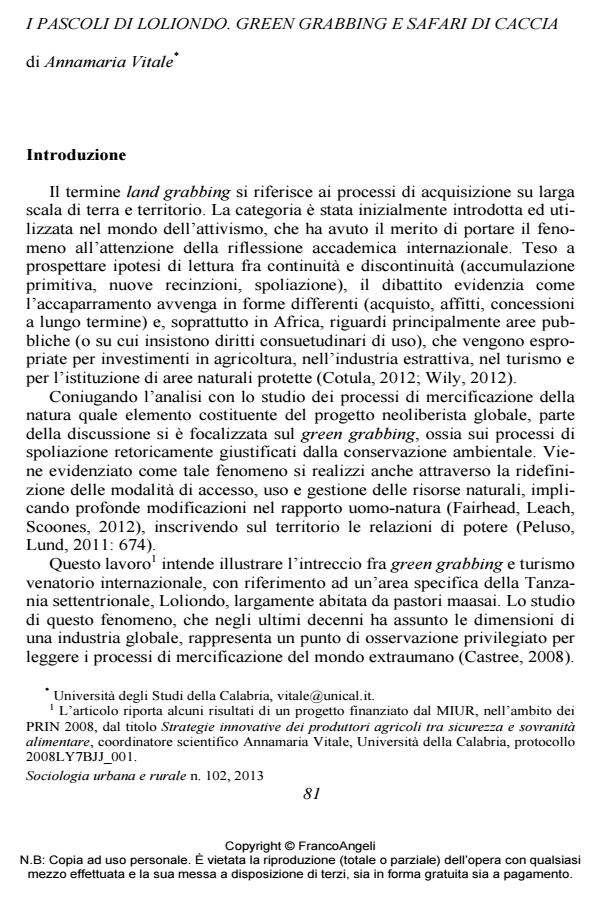I pascoli di loliondo. green grabbing e safari di caccia
Titolo Rivista SOCIOLOGIA URBANA E RURALE
Autori/Curatori Annamaria Vitale
Anno di pubblicazione 2013 Fascicolo 2013/102
Lingua Italiano Numero pagine 15 P. 81-95 Dimensione file 211 KB
DOI 10.3280/SUR2013-102006
Il DOI è il codice a barre della proprietà intellettuale: per saperne di più
clicca qui
Qui sotto puoi vedere in anteprima la prima pagina di questo articolo.
Se questo articolo ti interessa, lo puoi acquistare (e scaricare in formato pdf) seguendo le facili indicazioni per acquistare il download credit. Acquista Download Credits per scaricare questo Articolo in formato PDF

FrancoAngeli è membro della Publishers International Linking Association, Inc (PILA)associazione indipendente e non profit per facilitare (attraverso i servizi tecnologici implementati da CrossRef.org) l’accesso degli studiosi ai contenuti digitali nelle pubblicazioni professionali e scientifiche
Negli ultimi due decenni, il turismo di caccia, fenomeno strettamente legato alla trasformazione della fauna selvatica in “capitale naturale”, ha assunto le dimensioni di un’industria globale. Il lavoro intende illustrare l’intreccio fra green grabbing e turismo venatorio internazionale, con riferimento ad un’area specifica della Tanzania settentrionale, Loliondo, largamente abitata da pastori maasai. Verrà mostrato come il rilascio di una concessione di caccia da parte del governo centrale ha fortemente ristretto i diritti di accesso alle risorse naturali da parte dei pastori.
Parole chiave:Green grabbing; land grabbing; turismo venatorio; conservazione ambientale; turismo venatorio; Tanzania; maasai.
Annamaria Vitale, I pascoli di loliondo. green grabbing e safari di caccia in "SOCIOLOGIA URBANA E RURALE" 102/2013, pp 81-95, DOI: 10.3280/SUR2013-102006